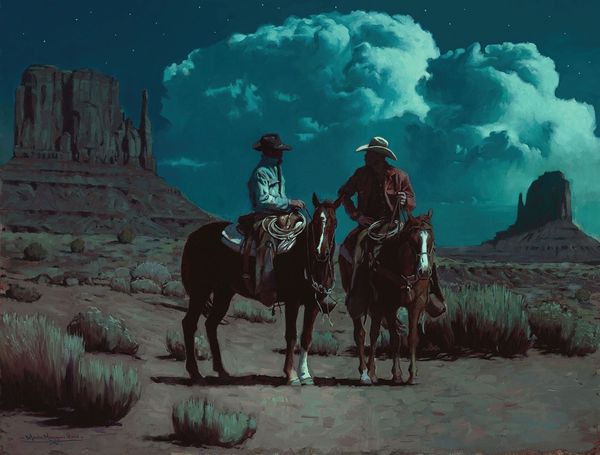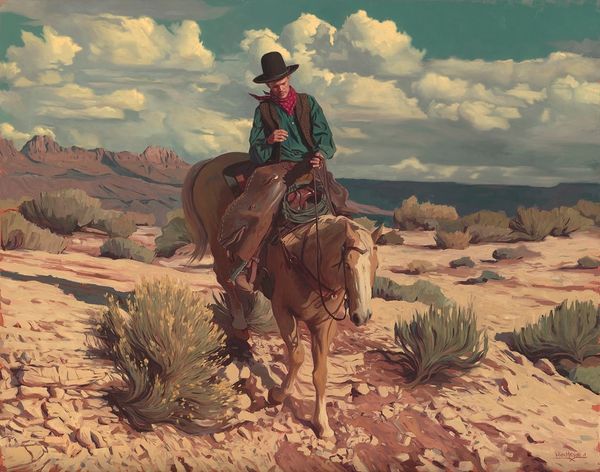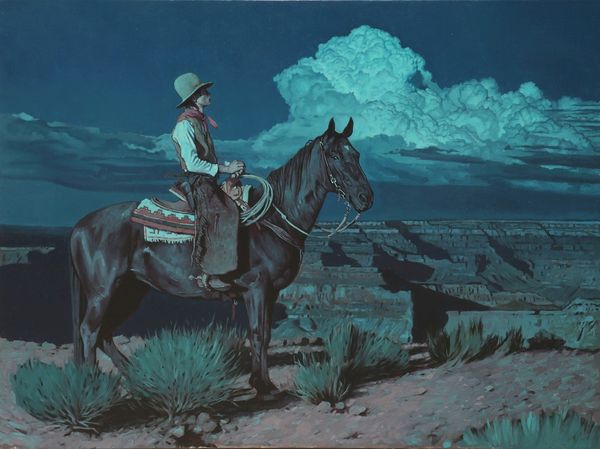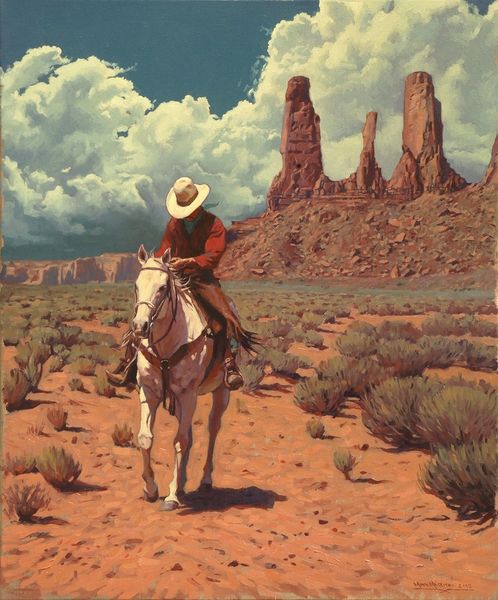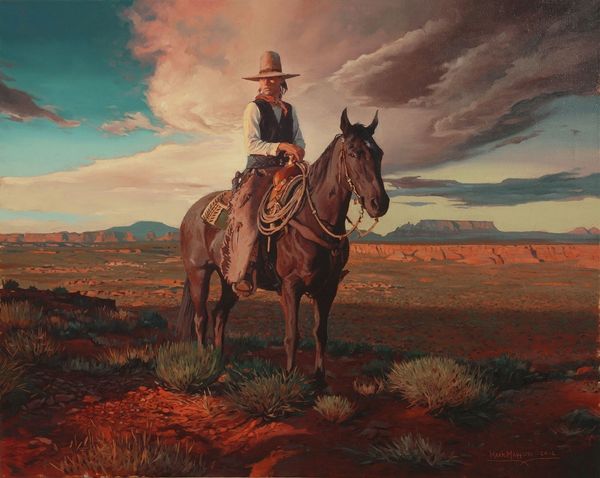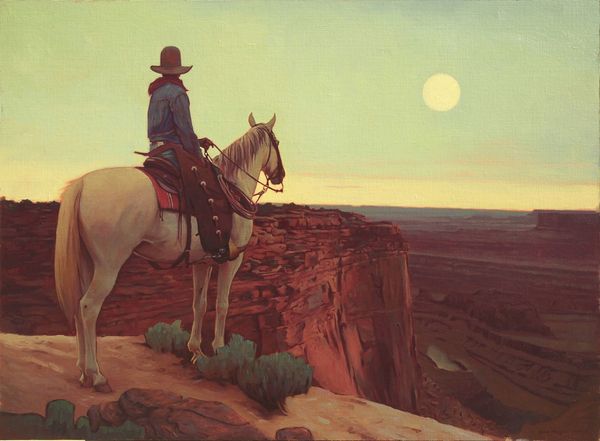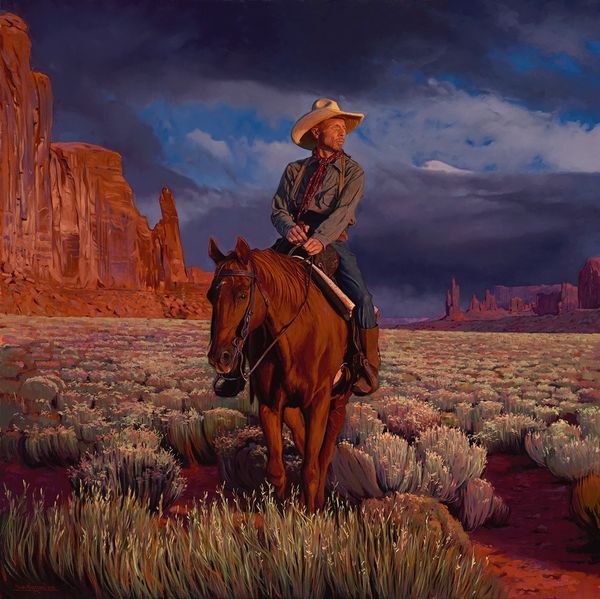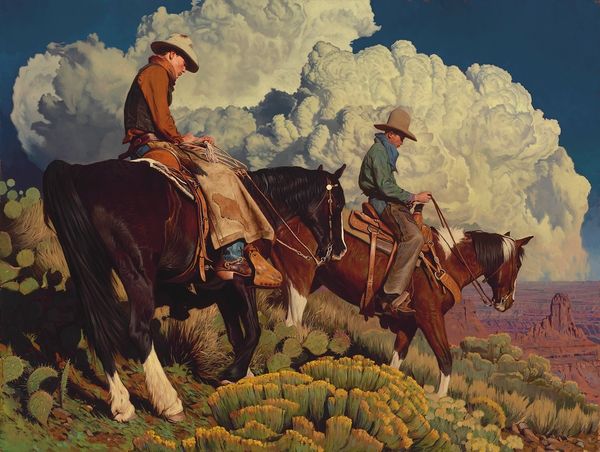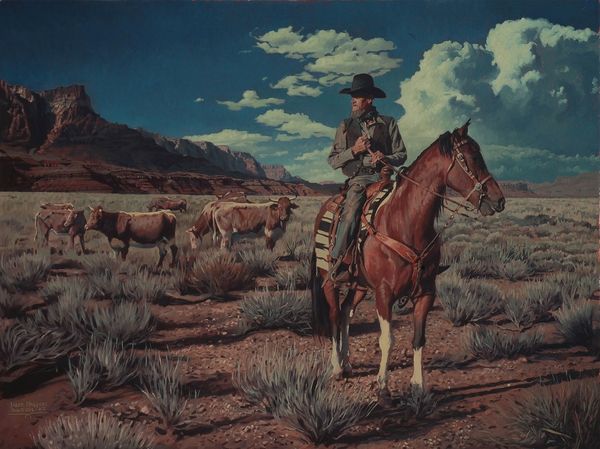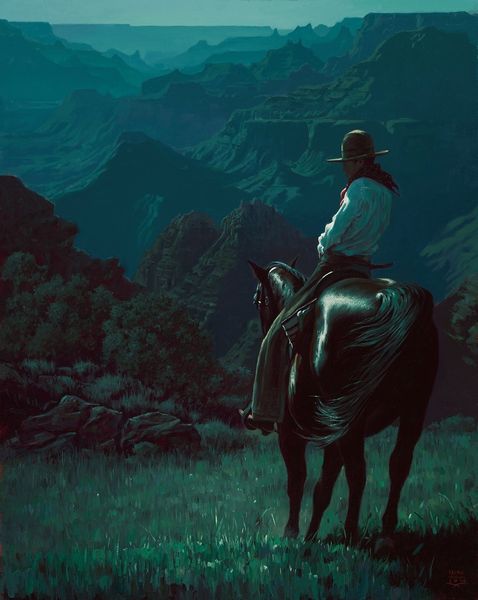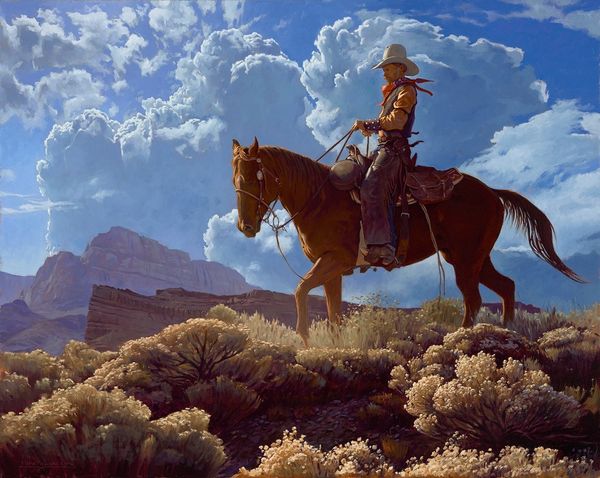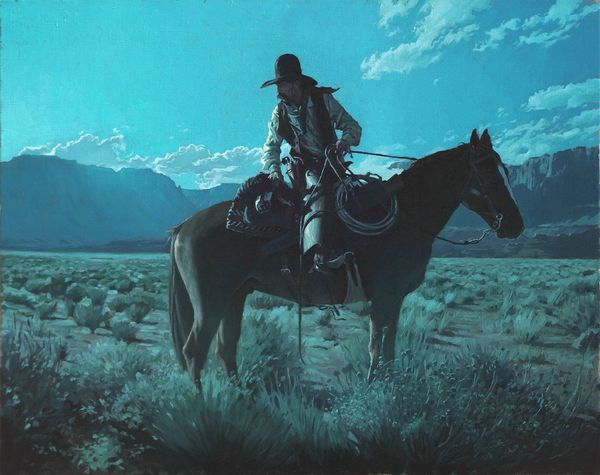
painting, plein-air, oil-paint
#
portrait
#
figurative
#
painting
#
plein-air
#
oil-paint
#
landscape
#
realism
Copyright: Modern Artists: Artvee
Curator: Mark Maggiori's "Alone in the Canyon," completed in 2014, offers us a contemporary take on classic Western themes. Editor: The immediate impression is one of stillness and contemplation. The almost monochrome palette gives the scene a powerful, quiet atmosphere, broken only by a smattering of stars above the mesas. Curator: Indeed. Maggiori is known for his plein-air style. This allows him to capture the particular light and mood of the American West. His paintings often deal with ideas around the mythology of the West, depicting working cowboys in dramatic landscapes. Editor: Looking closer, that interplay between individual identity and environment strikes me profoundly. He's "alone," as the title says, and yet, is he really? The sheer mass of the canyon suggests belonging, not isolation, despite the small scale of the human figure. It could be argued this is an exploration of intersectional identities –cowboy masculinity interwoven with nature. Curator: That's a fascinating point. It's true Maggiori situates his cowboys not as conquerors, but as components within the vastness. Think about how landscape painters romanticized scenes from nature with the Romanticist ideals in the early to mid nineteenth century. Maggiori similarly emphasizes how cowboys and their landscape are essential, and inseparable from the Western frontier's aesthetic. Editor: But at what cost has the aesthetics been upheld? Considering that his artwork, set in the canyons, are historically inhabited lands, I wonder if his cowboy paintings promote further erasure and cultural insensitivity of Indigenous peoples by continuing to focus solely on the figure of the cowboy as the sole inhabitant. Curator: Well, to play devil’s advocate, art allows different audiences to formulate varied opinions about shared histories, which might actually benefit an intellectual reconsideration. Maggiori seems less concerned with history or legacy than he does with craft and his technical abilities to emulate the qualities of painters who practiced realism during the nineteenth century. Editor: I'll consider that. Even if there’s that tension, though, I find myself coming back to the feeling of solitude that pervades the canvas, like a quiet commentary on the pressures of contemporary life, the kind even cowboys would have faced then as now. Curator: It is definitely a captivating piece and your reading adds compelling new layers to how we can look at Maggiori's art in this space. Editor: And it just goes to show, even what appears simple can hold so much history and potential conversation!
Comments
No comments
Be the first to comment and join the conversation on the ultimate creative platform.
